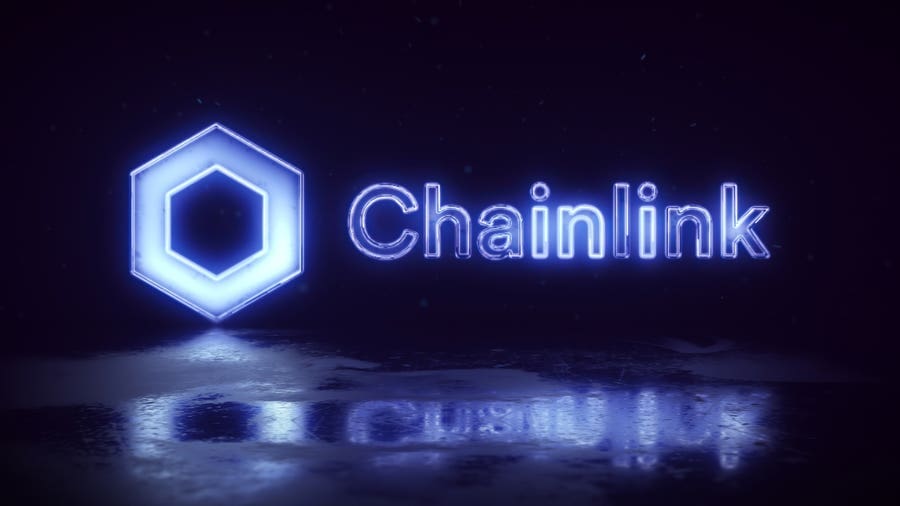Table of Contents
The early crypto traders experimented with everything, and we owe them. Most of what we know about crypto today came from their wild trials. One idea was moving assets freely between blockchains, like sending Ethereum into Bitcoin or vice versa.
It was painfully difficult and left traders frustrated, stuck on centralized exchanges, burning money on fees, and wasting hours. Blockchains were powerful, but each one lived on its own lonely island.
Then the crypto gods smiled and gave us blockchain interoperability, a game-changer that built bridges and highways connecting those islands so networks could finally trade, share data, and collaborate. This article will show you what interoperability is, why it matters, and how it transforms how blockchains work together.
What is Blockchain Interoperability?

Blockchain interoperability is the ability of different blockchains to communicate, share data, and work together. Instead of being locked into one network, interoperability makes it possible for value and information to flow across many different blockchains. This removes fragmentation, improves liquidity, and unlocks more ways for decentralized applications (dApps) to work across chains.
At its core, interoperability makes sure that blockchains aren’t isolated systems but part of a connected ecosystem where users, developers, and businesses can interact easily.
Why Does Interoperability Matter?
Here’s the problem: today’s blockchain world is highly fragmented. Bitcoin, Ethereum, Solana, and dozens of others all exist, but most can’t talk to each other directly. That means sending tokens, using smart contracts, or even recording transactions usually has to stay locked inside one chain. If you want to cross over, you often end up stuck on centralized exchanges, paying high fees, and waiting forever.
Interoperability fixes this. It’s the translator and bridge that makes blockchains work together smoothly and securely. With the right solutions, interoperability makes sure activity that starts on one blockchain can flow into another. It pushes blockchains out of isolation and into an open, connected, multi-chain world.
And this matters not just for users but also for builders. There are already more than 100 blockchains, plus a growing number of layer-2 networks, each optimized for different things like speed, privacy, or decentralization. Without interoperability, developers would need to rebuild their apps for every chain, and businesses would waste resources building custom integrations just to interact with multiple blockchains.
Interoperability solves this by acting like a universal adapter, letting apps, users, and even traditional systems tap into the strengths of each blockchain without reinventing them.
How Does Blockchain Interoperability Work?
The cross-chain protocol simplifies interoperability between distinct blockchain networks and allows data sharing across numerous blockchain networks. The cross-chain protocol enables direct user-to-user communication. As a result, blockchains with similar networks can trade information and value.
It differs from network to network, nevertheless, as no one predetermined approach can be applied uniformly across all networks. Each network has a different approach to blockchain interoperability to enable transactions without third-party interfaces.
Atomic swaps enable cross-blockchain token exchanges between two parties. Blockchain networks can also keep an eye on what’s going on on other chains owing to relays. They work chain-to-chain, allowing a single contract to act as the central client for numerous other nodes over multiple chains without the need for distributed nodes. It enables it to validate particular primary headers and the entire transaction history immediately. However, the relay approach’s security requires a lot of money to operate and maintain.
What Are the Key Projects Driving Interoperability?
1. Polkadot

Polkadot’s relay chain acts like a hub where connected blockchains (parachains) can securely share information and assets. Instead of building one big chain, it creates an ecosystem where many blockchains can work together while keeping their own rules. That shared security and seamless data flow is its main push for interoperability.
2. Cosmos
Cosmos’ IBC (Inter-Blockchain Communication ) protocol is a game-changer. It gives blockchains a standard way to speak to each other. This means a chain built on Cosmos can easily transfer tokens or messages to another chain without special bridges or middlemen. By setting the standard, Cosmos is shaping how interoperability can scale across dozens of networks.
3. Thorchain
Thorchain is solving the problem of native asset swaps across chains. Most systems force you to use wrapped tokens, but Thorchain makes it possible to swap assets like BTC for ETH directly. That makes interoperability real and practical for DeFi users, not just a theory.
4. Chainlink

Chainlink extends interoperability by connecting blockchains not just to each other but also to the outside world. Its Cross-Chain Interoperability Protocol (CCIP) allows secure communication and transfers between different chains, while its oracles feed in real-world data. Together, this makes chains more useful and connected.
5. Radix
Radix stands out for building a DeFi-first environment where apps and assets can plug into other networks. Its tech focuses on scalability and composability (different DeFi apps working together), which makes it easier for developers to create dApps that interact smoothly across blockchains.
6. Fusion
Fusion drives interoperability in finance. With its Distributed Control Rights Management (DCRM) tech, it allows digital assets to move safely across multiple chains. This is especially important for DeFi, where users might want to borrow on one chain, lend on another, and trade on a third. Fusion makes that flow possible.
Together, these projects are laying the groundwork for a truly connected, multi-chain ecosystem.
Benefits of Blockchain Interoperability
- Enhanced Scalability: By spreading the workload across sidechains or partner networks, blockchains avoid traffic jams and reduce congestion.
- Easy asset transfers: Interoperability makes it simple to move tokens across blockchains without the headache of manual conversions. Whether it’s using wrapped tokens or sending assets directly.
- Access to more opportunities: Traders, developers, and everyday users get to tap into multiple platforms at once, unlocking new trading, lending, and NFT opportunities.
- Improved Efficiency and Cost: Moving across chains can cut down transaction fees and time compared to staying stuck on one congested network.
- Fuel for innovation: When blockchains can interact, developers can build smarter apps, and the whole industry moves forward faster.
- Cross-industry collaboration and smarter apps: Interoperability allows not just businesses across sectors to exchange data, but also enables smarter dApps that can connect private and public blockchains, unlocking uses for Web3 that weren’t possible before.
Challenges of Interoperability
These challenges often raise more questions for both users and developers, so let’s answer a few common ones:
- Security risks: Cross-chain bridges and protocols often become prime targets for hackers. Billions have already been lost in bridge exploits, showing that connecting blockchains securely is still a tough nut to crack.
- Complexity: Every blockchain has its own rules, languages, and designs. Building seamless integration between them is like translating between dozens of dialects at once; accurate, but demanding.
- Scalability Limitations: Many interoperability solutions work fine at a small scale but can choke under heavy network activity.
- Regulatory uncertainty: Moving assets across borders and blockchains raises big questions: Which country’s rules apply? How do you track or tax multi-chain transactions? Since laws are still catching up, this remains a gray area.
- Data verification: Since blockchain records are permanent, any incorrect data entered at the starting point becomes a permanent problem. Interoperability makes it even more critical to ensure information is accurate before it’s shared across chains.
- Different trust models: Blockchains aren’t all built alike. Some are secured by thousands of validators, others by just a handful. Linking a weaker chain to a stronger one could expose the more secure system to risks it wouldn’t normally face.
- Limited functionality: While interoperability is promising, in practice it is still constrained. The tech ensures data security in transfers, but true interoperability across all chains is still a work in progress.
Frequently Asked Questions about Blockchain Interoperability
Can all blockchains be interoperable?
Not all blockchains can be interoperable, but most can. Some blockchains are built with unique rules or closed systems that don’t easily connect with others. Interoperability tech is improving, but full interoperability between every chain is unlikely.
How do regulatory systems handle cross-chain assets?
Most regulators don’t have specific rules for cross-chain assets yet. Instead, they apply existing laws for securities, commodities, or payments, depending on how the asset is classified. The challenge is that moving tokens across chains can blur those definitions, making compliance tricky for both users and developers.
What happens if a bridge or protocol gets hacked?
If a bridge or protocol gets hacked, assets can be lost, transactions can be manipulated, or the security of connected chains may be compromised. This is why audits, security checks, and reliable protocols are very important.
Does interoperability slow blockchains down?
Sometimes, yes, it can slow blockchains down. Interoperability can go both ways. In many cases, it lowers fees and speeds things up by spreading activity across multiple chains. But the extra verification steps can add delays or higher fees, especially if the networks involved are congested.
What’s the future of blockchain interoperability?
The goal is a world where blockchains connect as easily as apps on your phone. We’re not fully there yet, but projects like Polkadot, Cosmos, and Chainlink are bringing us closer every day.
Conclusion
Blockchain interoperability is basically the glue that will hold the future of Web3 together. From enabling seamless asset transfers to boosting scalability and innovation, it opens doors for a more collaborative blockchain world.
While the road isn’t without obstacles and there are still big challenges, progress is still being made every day, and the direction is clear. Interoperability is what will take blockchains from isolated islands to a connected digital economy where everything just works better together.
Last updated on October 2, 2025

